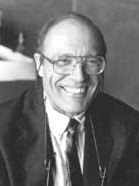

Gian-Carlo Rota was born into a talented family. Many members of his
family had achieved fame in their areas of expertise. For example, one of Gian-Carlo's uncles wrote scripts for Federico Fellini's films. Gian-Carlo was educated in Italy up to the age of 13. This was near the end of World War II and, due to his father's anti-fascist views, the
family was forced to move to northern Italy where they hid for a time before
crossing the border into Switzerland. The family eventually escaped to Ecuador where Rota completed his secondary school education. The positive side to this remarkable escape story was that Rota was fluent in English, Italian, Spanish and French.
Rota entered the United States in 1950 at the age of 18 to undertake his university studies. He get his Bachelor's Degree from Princeton University in 1953, his Master's Degree from Yale University in 1954, and a Ph.D. from Yale in 1956.
In this same year that he was awarded his doctorate, Rota married and received a Postdoctoral Research Fellowship to undertake research at
the Courant Institute at New York University. After spending a year in New York, Rota was appointed as Benjamin Peirce Instructor at Harvard
University. He held this post until 1959 when he joined the faculty at Massachusetts Institute of Technology. With the exception of the years from 1965 to 1967
when he was at the Rockefeller University, Rota remained at MIT for the rest of his career.
Rota was given the title Professor of Applied Mathematics at MIT but in 1972 his title was changed to Professor of Applied Mathematics and Philosophy. He
is the only professor at MIT ever to have such a title. However, he had many other roles outside MIT. Rota had a long association with the Los Alamos
Scientific Laboratory where he enjoyed being with his friend Ulam and collaborating with him. He served as a consultant to the Laboratory from in 1966 and,
in 1971, he was made a Senior Fellow of the Laboratory.
Rota was also a consultant with the Rand Corporation from 1966 to 1971 and with the Brookhaven National Laboratory from 1969 to 1973.
Rota worked on functional analysis, and he wrote a series of papers on operator theory. Two
papers in 1959-60 looked at ergodic theory which is an area which requires considerable combinatorial skills. These papers seem to have led Rota away from operator theory and into the area of combinatorics. His first major work on combinatorics, which was to
change the direction of the whole subject, was On the Foundations of Combinatorial Theory, which Rota published in 1964.
Rota received the Steele Prize from the American Mathematical Society in 1988. The Prize citation singles out this paper as the single paper most responsible for the revolution that incorporated combinatorics into the mainstream of modern mathematics.
This paper was the first of a series of 10 papers with this main title. All 10 have subtitles and the last 9 have co-authors. Most of these were published between 1970 and 1974.
Rota received many other awards for his outstanding contributions to numerous areas.He was awarded the Medal for Distinguished Service from the National Security Agency in 1992. He was elected to the National Academy of Sciences in 1982, was vice-president of the
American Mathematical Society in 1995-97, and the Society's Colloquium Lecturer in 1998. He was also a fellow of the American Academy of Arts and
Sciences, a member of the Academia Argentina de Ciencias, a fellow of the Institute of Mathematical Statistics, the Heidegger Circle, the American Association
for the Advancement of Science and the Husserl Circle.
He held 4 honorary degrees, from the University of Strasbourg, the University L'Aquila, the University of Bologna, and Brooklyn Polytechnical University.